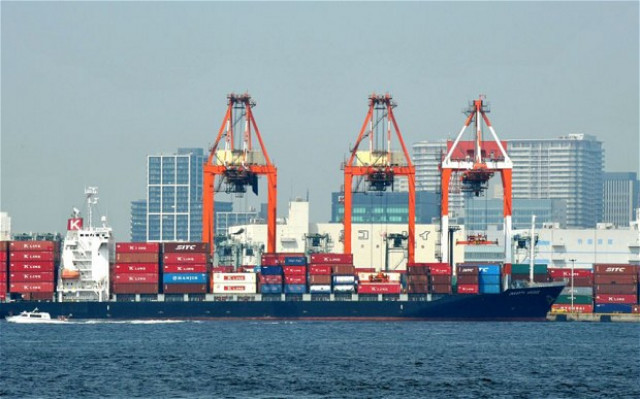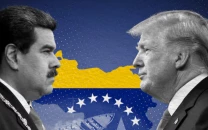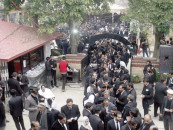Trade deficit widens by 45%
Trade deficit gap from July through September this year was $2 billion higher than IMF projections

The trade deficit gap between imports and exports, from July through September this year was $2 billion higher than the projections made by International Monetary Fund (IMF). The IMF had projected $4.48 billion trade deficit for July to September period.
Pakistan’s exports contracted by 10.1% in the first three months and stood at only $6 billion to $680 million lower than the exports made in the comparative period of the last fiscal year, according to figures released by Pakistan Bureau of Statistics on Tuesday.
The reduction witnessed despite much-trumpeted Vision 2025 of the Planning Commission that promises to take the exports to $150 billion in next ten years. To achieve this overambitious goal, the country has to increase the exports to $38 billion this year from the last year’s level of $25 billion.
Contrary to contraction in exports, Pakistan’s import bill increased to $12.5 billion in the first three months, showing an increase of $1.34 billion or 12% growth over last year’s first quarter imports. The IMF had projected that Pakistan’s imports would grow to $10.7 billion in first quarter –an assessment that went off the mark by $1.84 billion.
The result of contraction in exports and double-digit growth in imports was the trade deficit of $6.5 billion –showing an increase of 45.1% or $2.1 billion trade deficit in first quarter of the fiscal year.
The worrisome trend suggests that the current account deficit –the gap between external receipts and payments, would be far higher than the budgeted number of $2.8 billion or 1.1% of Gross Domestic Product, according to an economist working with a government agency.
He said the first quarter figures were not surprising as these were the outcome of exchange rate rigidity. The exchange rate rigidity results into higher demands for imported goods and fall in exports. The government has made its budget on the assumption of Rs100 to a dollar exchange rate parity, according to Finance Minister Ishaq Dar. However, the IMF’s projections show that the real value of rupee is at Rs114 to a dollar.
The independent analysts say that as the government has started facing difficulties in getting foreign loans, the result of the widening trade deficit would be erosion of foreign currency reserves held by the State Bank of Pakistan. By October 3, the official reserves stood at $8.8 billion as against the IMF’s projection of $10.9 billion for the first quarter of current fiscal.
The national planners have projected a 5.8% growth in exports and 6.2% growth in imports for the current fiscal year. The imports for the current fiscal year have been projected at $44.2 billion as against $26.99 billion exports, showing the trade deficit of $17.2 billion.
Yearly statistics
The yearly trade figures depict a gloomier scenario. In September alone the trade deficit widened 102.7% over the same month of the last year. As against a trade deficit of $1.17 billion in September last year, the deficit ballooned to $2.38 billion last month, according to the PBS.
As against $2.6 billion exports of September last year, the receipts from exports were $2.2 billion last month, showing contraction of 16.7%. However, the imports in last month grew to $4.6 billion –higher by about one-fifth over imports in the same month of last year.
Monthly statistics
On a monthly basis, the trade deficit in September contracted 15.2% over August due to contraction in imports and 14% growth in exports, data from PBS showed.


















COMMENTS
Comments are moderated and generally will be posted if they are on-topic and not abusive.
For more information, please see our Comments FAQ